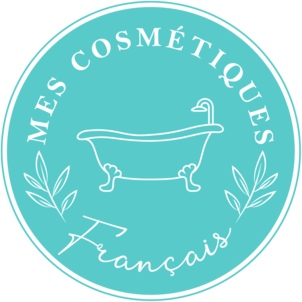The MCF product commitment charter
Cosmetics represent the world of beauty and well-being. How pleasant it is to apply our cream to the face in the morning, to have soft skin in the shower, to brush our body with this oil that smells so good ... Beyond the pleasure we feel in using these products, do we question ourselves enough if they are "good" for our skin or for our health?
To tell you all, we always ask ourselves the question at Mes Cosmétiques Français. You have surely already heard of parabens, silicones, endocrine disruptors ...
Well, for all those who are not yet knowledgeable on the subject, we are clearing it up for you.
 For several years, many ingredients have been put on the spot by the competent authorities because they are suspected of harming us in our daily care.
For several years, many ingredients have been put on the spot by the competent authorities because they are suspected of harming us in our daily care.
The first were the paraben preservatives, yet widely used in the food or drug industry. While studies have been carried out to be able to rule on the dangerous potential of these raw materials, many consumers very quickly seized on the debate and put pressure on cosmetic laboratories by boycotting all products containing them. Today, hundreds of other chemical molecules are awaiting evaluation.
We asked Laurie, a cosmetic chemical engineer specializing in natural products, for advice: “In conventional cosmetics, a number of chemical ingredients are used to build the product's galenic and do not provide active properties. They are present in large majority and some can be irritating, allergenic, harmful to the environment, or even induce harmful alterations for our body. This is the whole current debate about endocrine disruptors that are dangerous for our health and that of our descendants ".
So concretely, which are they?
Let us quote them sulphates - irritant surfactants for the skin and harmful to the environment - present in washing products; aluminum salts - potentially carcinogenic - found mainly in deodorants and antiperspirants; or conservatives such as parabens, phenoxyethanol or triclosan - with carcinogenic, irritant and endocrine disrupting potential.
Obviously this list is not exhaustive. and we give you some advices to choose better:
Take a closer look at the formulas and ban products with overly long ingredient lists full of chemical names of all kinds.
And because we want the best for you, we've made a list of what we at My French Cosmetics, have excluded from our selection. Because we are committed to making you discover healthy local products, the products are selected according to their formulas to offer you only the cream of the crop. Follow the leader !

At Mes Cosmetics Français, we ban:
- Alkylphenols
- BHA and BHT
- DEA
- Glycol ethers
- Mineral oils
- Silicone oils and waxes
- Formaldehyde liberators
- Parabens
- PEG
- Phthalates
- Aluminum salts
- Sulphates - SLS and ALS
- Triclosan
Alkylphenols
Emulsifying agents. Suspected of having an impact on fertility and on the fetus, endocrine disruptor, DNA damage and potentially carcinogenic.
Note: nonylphenol, the most dangerous is a substance used in spermicides.
INCI: Nonylphenol, Nonoxynol, Octylphenol, Propylphenol ...
BHA and BHT
Antioxidant and preservative used in moisturizers and lipsticks. Endocrine disruptor, carcinogen.
INCI: E320.
DEA
Acidity corrector. Carcinogen.
INCI: Cocamide DEA, Lauramide DEA.
Glycol ethers
Solvents, sometimes used as perfumes. Very irritating to the skin and allergens. They are endocrine disruptors, they cause reproductive disorders in humans and are suspected of being carcinogenic ...
INCI: 2-phenoxyethanol, Phenoxytol.
Formaldehyde liberators
Conservative. Irritating and allergenic. Formaldehyde is a recognized carcinogen.
INCI: DMDM hydantoin, Diazolidinyl urea, Imidazolidinyl urea, Methenamine and Quaternium-15.
Mineral oils
Very harmful, form an occlusive film on the skin. Substances from petrochemicals.
INCI: Paraffinum liquidum, Mineral Oil, Cera Microcristallina, Petrolatum ...
Silicone oils and waxes
Brings softness and a "smooth" and "slippery" effect to the hair and the skin.Used in particular in shampoos and foundations. Catastrophic ecological balance.
INCI: Dimethicone, Amodimethicone, Cyclohexasiloxane, Cetyl dimethicone copolyol, Phenyl trimethicone, Stearyl dimethicone… Endings in -one, -ane.
Parabens
Preservatives: allergens, endocrine disruptors, potentially carcinogenic (especially breast cancer).
INCI: Butylparaben, Methylparaben, Ethylparaben, Propylparaben, E214 to E219, propyl parahydroxybenzoate, methyl parahydroxybenzoate.
PEG
Surfactants, emulsifiers or humectants. Bring softness and more or less consistency to creams. Obtained from chemical processes using toxic gases. Suspected of being carcinogenic (breast cancer).
INCI: Polyethylene glycol (PEG), Polypropylene Glycol (PPG), PEG-6, PEG-8, PEG-40, PEG-100…
Phthalates
Hidden in cosmetics, they appear under the name: Parfum or Fragrance. It's a mixture of chemicals. Endocrine disruptors, suspected carcinogens (breast and testicular cancer).
INCI: termination in -Phtalate, Diisodecylphtalate, Parfum, Fragrance.
Aluminum salts
Antiperspirants, used in deodorants but also in toothpaste (and even in certain medicines…). Carcinogenic, they would also have harmful effects on the nervous system in the long term.
INCI: Aluminum.
Sulphates - SLS and ALS
Foaming agents, surfactants, emulsifiers used in shower gels, shampoos and toothpastes. Irritating and drying, very aggressive for the skin. Endocrine disruptors, suspected carcinogens (breast cancer).
INCI: Sodium Laureth Sulfate, Sodium Lauryl Sulfate, Ammonium Lauryl Sulfate.
Triclosan
Conservative. It is mainly found in anti-acne products, toothpastes but it is very widespread ... It is very irritating to the skin. It makes you more resistant to antibiotics ... It is an endocrine disruptor and it is carcinogenic. Catastrophic ecological balance.
INCI: Triclosan, TCL, Trichlorine, Cloxifenolum, Lexol 300, Aquasept, Irgasan, Gamophen, DP300, Diphenyl hydroxyl ether.
